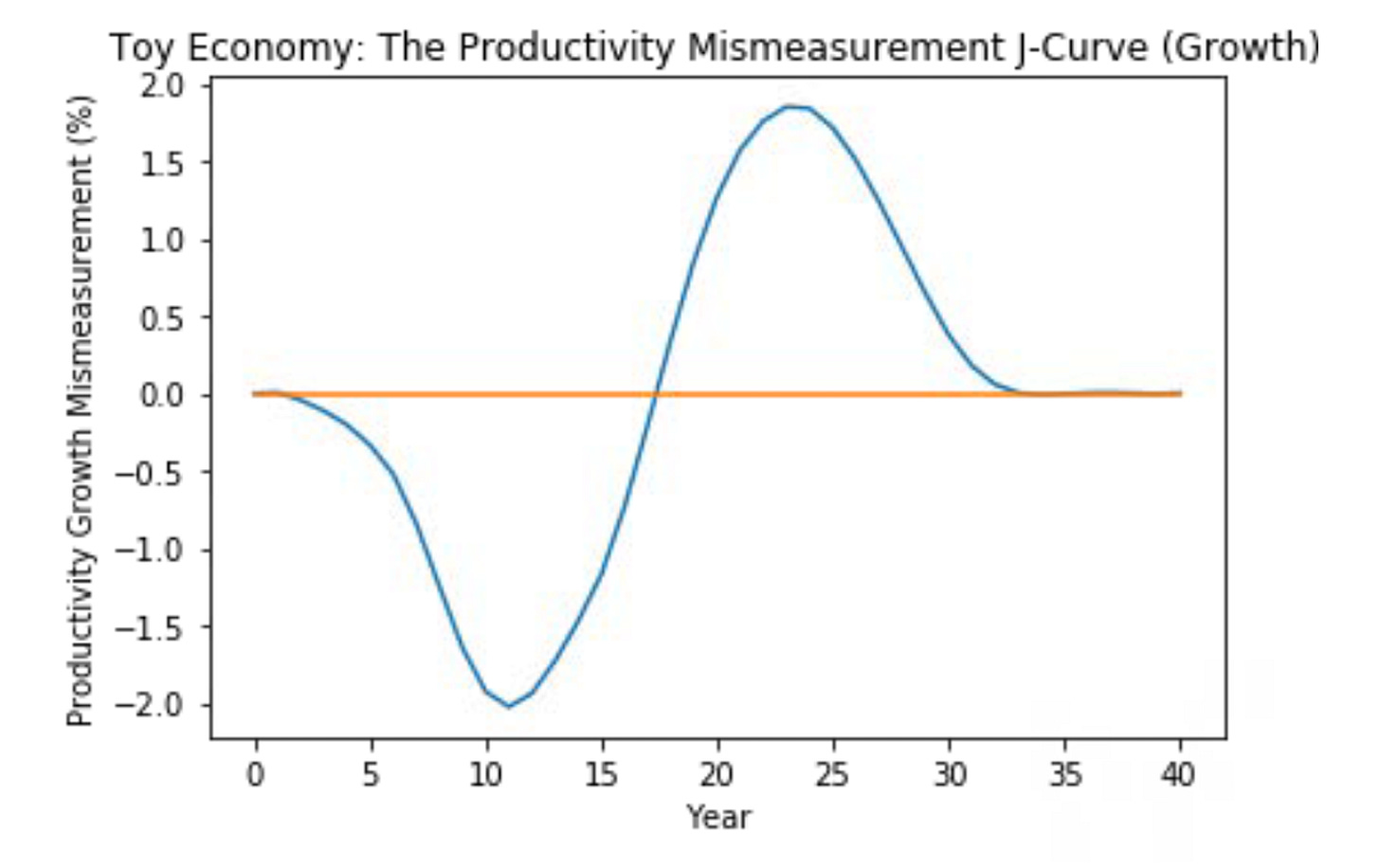The AI Productivity Paradox: High Adoption, Low Transformation
Two recent studies update Brynjolfsson's original productivity paradox showing hazards for companies and entry-level workers—and opportunities for startups.
Post methodology: @gpt4@gpt5@claude-4-sonnet@gemini-pro via Dust: write an essay on how the [MIT NANDA and Canaries] papers update Brynjolfsson's initial productivity paradox paper and what it means for AI founders. Final post is based on Gemini draft with additions from gpt4 and gpt5. Light editing and formatting for Substack.In the 1990s, Erik Brynjolfsson and colleagues articulated the “productivity paradox”—the observation that despite rapid advances in information technology and proliferation of computers in the workplace, productivity growth remained sluggish. The paradox suggested that the mere presence of new technology was not sufficient to drive productivity; complementary factors such as organizational change, skills, and business process innovation were essential.
Two new 2025 papers—MIT NANDA’s “The GenAI Divide” and Brynjolfsson et al.’s “Canaries in the Coal Mine?”—update this paradox for the era of generative AI. They illustrate both the progress made and the new challenges emerging as AI begins to reshape business and labor markets.
Crossing the GenAI Divide
The MIT report introduces the concept of the "GenAI Divide," a chasm separating the 5% of companies realizing significant value from AI from the 95% that are not, despite widespread adoption of tools like ChatGPT and Copilot. This divide is not defined by a lack of investment or interest, but by a failure to integrate AI into core business processes in a way that generates measurable P&L impact. The report identifies several key reasons for this failure:
The Learning Gap: Most enterprise AI tools are static. They don't learn from user feedback, adapt to new contexts, or improve over time. This "learning gap" is the primary reason why employees often prefer consumer-grade tools for ad-hoc tasks but revert to human colleagues for complex, mission-critical work.
The Pilot-to-Production Chasm: While many companies are piloting AI solutions, very few are successfully deploying them at scale. The report finds that only 5% of custom enterprise AI tools reach production, often due to a mismatch between the tool's capabilities and the specific workflows of the organization.
The "Shadow AI" Economy: In the absence of effective, officially sanctioned tools, employees are turning to their own personal AI subscriptions to get work done. This "shadow AI" economy highlights a significant unmet need and provides valuable clues as to what users actually want: flexible, intuitive tools that can be easily adapted to their individual needs.
This situation is a clear echo of the original 1993 productivity paradox paper and particularly Brynjolfsson's 2019 introduction of the J-curve concept. Just as the proliferation of personal computers in the 1980s and 90s did not immediately translate into measurable productivity gains, the widespread availability of generative AI has yet to produce a corresponding surge in economic output. The MIT report suggests that the reason for this is that we are still in the early stages of a much larger transition, one that requires not just new tools, but new ways of working.

AI's First Impacts on the Labor Market
Brynjolfsson's "Canaries in the Coal Mine?" paper provides a granular, data-driven look at the first tremors of this transition in the AI era. Using high-frequency payroll data, the authors find that since the widespread adoption of generative AI, there has been a significant decline in employment for early-career workers (ages 22-25) in occupations most exposed to AI, such as software development and customer service. This effect is most pronounced in roles where AI is used for automation rather than augmentation.
This finding is crucial for several reasons. First, it provides some of the first large-scale, empirical evidence of AI-driven job displacement. Second, it highlights the differential impact of AI on workers with varying levels of experience. The fact that early-career workers are most affected suggests that AI is currently best at replicating the codified, "book-learning" knowledge that is the hallmark of entry-level positions. The tacit, experience-based knowledge of more senior workers appears, for now, to be more resilient to automation.
This has significant implications for how we think about the future of work. It suggests that the transition to an AI-powered economy will not be a simple matter of replacing humans with machines. Instead, it will be a more complex process of task reallocation, with AI taking over some tasks while creating new ones, and with the value of human skills shifting from codified knowledge to tacit expertise.
A Playbook for Bridging the Divide
For AI founders, these two papers offer a clear set of instructions for building enterprise AI application companies that can not only survive, but thrive in this new environment. The key is to move beyond the hype and focus on solving real-world business problems in a way that is both technologically innovative and organizationally intelligent. Here are some key takeaways:
Focus on Learning, Not Just Generating: The "learning gap" identified in the MIT report is the single biggest opportunity for AI startups. Founders who can build systems that learn from user feedback, adapt to changing workflows, and improve over time will have a massive competitive advantage. This means moving beyond simple "prompt-in, text-out" models and building true "agentic" systems that can act as persistent, collaborative partners for their users.
Build for the Workflow, Not Just the User: The failure of many enterprise AI tools can be traced to a lack of deep integration with existing workflows. Founders need to obsess over the details of how their customers actually work and design their products to fit seamlessly into those processes. This may mean sacrificing some of the "wow" factor of a flashy demo in favor of a more practical, but ultimately more valuable, solution.
Embrace the "Shadow AI" Economy: The fact that so many employees are using their own personal AI tools is not a threat, but an opportunity. It is a massive, real-time focus group that can provide invaluable insights into what users actually want and need. Founders should study this "shadow AI" economy closely and use what they learn to inform their product development.
Target the Back Office: While sales and marketing are often the most visible and well-funded departments, the MIT report suggests that the highest ROI for AI may actually be in the back office, in functions like finance, procurement, and operations. These are often the most process-driven and data-intensive parts of a business, and they are ripe for disruption.
Think Like a BPO, Not a SaaS Company: The most successful AI buyers, according to the MIT report, are treating their AI vendors not as software providers, but as business process outsourcing (BPO) partners. They are demanding deep customization, a focus on business outcomes, and a true partnership approach. Founders who can deliver on these expectations will be well-positioned to win in the enterprise market.
Brynjolfsson’s paradox is still here but it has changed shape. In GenAI, the missing complements are partly inside the product (learning, memory, orchestration) and partly inside the enterprise (service-like procurement, decentralized ownership, outcome metrics). Founders who internalize both will convert today’s demos into tomorrow’s defensible moats—and will be the ones whose customers’ productivity finally shows up in the statistics.
The AI revolution is not a single event, but a long, complex process of co-evolution between technology, organizations, and individuals. The papers from MIT and Brynjolfsson provide a valuable snapshot of where we are in that process, and offer a clear set of guideposts for the road ahead. For AI founders, the message is not to just build the next great AI model, but to build the companies that will help us navigate the next great economic transformation.



there wont be much in gai next stage is neuromorphic energivore beasts like llm is not sustainable but necessary to go to the next step 🙌
++ Good Post, Also, start here 100+ Most Asked ML System Design Case Studies and LLM System Design
https://open.substack.com/pub/naina0405/p/bookmark-most-asked-ml-system-design?r=14q3sp&utm_campaign=post&utm_medium=web&showWelcomeOnShare=false